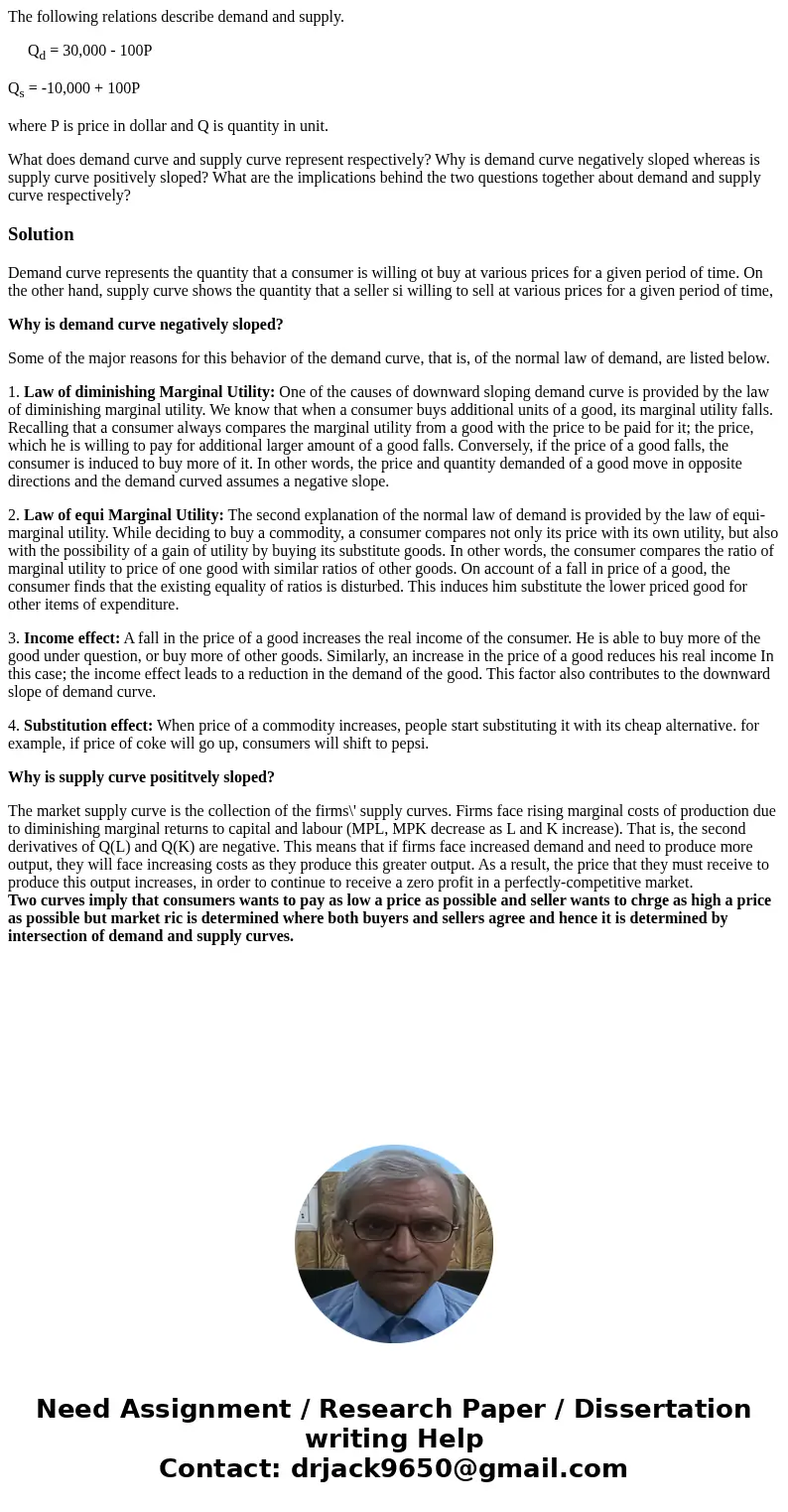The following relations describe demand and supply Qd 30000
The following relations describe demand and supply.
Qd = 30,000 - 100P
Qs = -10,000 + 100P
where P is price in dollar and Q is quantity in unit.
What does demand curve and supply curve represent respectively? Why is demand curve negatively sloped whereas is supply curve positively sloped? What are the implications behind the two questions together about demand and supply curve respectively?
Solution
Demand curve represents the quantity that a consumer is willing ot buy at various prices for a given period of time. On the other hand, supply curve shows the quantity that a seller si willing to sell at various prices for a given period of time,
Why is demand curve negatively sloped?
Some of the major reasons for this behavior of the demand curve, that is, of the normal law of demand, are listed below.
1. Law of diminishing Marginal Utility: One of the causes of downward sloping demand curve is provided by the law of diminishing marginal utility. We know that when a consumer buys additional units of a good, its marginal utility falls. Recalling that a consumer always compares the marginal utility from a good with the price to be paid for it; the price, which he is willing to pay for additional larger amount of a good falls. Conversely, if the price of a good falls, the consumer is induced to buy more of it. In other words, the price and quantity demanded of a good move in opposite directions and the demand curved assumes a negative slope.
2. Law of equi Marginal Utility: The second explanation of the normal law of demand is provided by the law of equi-marginal utility. While deciding to buy a commodity, a consumer compares not only its price with its own utility, but also with the possibility of a gain of utility by buying its substitute goods. In other words, the consumer compares the ratio of marginal utility to price of one good with similar ratios of other goods. On account of a fall in price of a good, the consumer finds that the existing equality of ratios is disturbed. This induces him substitute the lower priced good for other items of expenditure.
3. Income effect: A fall in the price of a good increases the real income of the consumer. He is able to buy more of the good under question, or buy more of other goods. Similarly, an increase in the price of a good reduces his real income In this case; the income effect leads to a reduction in the demand of the good. This factor also contributes to the downward slope of demand curve.
4. Substitution effect: When price of a commodity increases, people start substituting it with its cheap alternative. for example, if price of coke will go up, consumers will shift to pepsi.
Why is supply curve posititvely sloped?
The market supply curve is the collection of the firms\' supply curves. Firms face rising marginal costs of production due to diminishing marginal returns to capital and labour (MPL, MPK decrease as L and K increase). That is, the second derivatives of Q(L) and Q(K) are negative. This means that if firms face increased demand and need to produce more output, they will face increasing costs as they produce this greater output. As a result, the price that they must receive to produce this output increases, in order to continue to receive a zero profit in a perfectly-competitive market.
Two curves imply that consumers wants to pay as low a price as possible and seller wants to chrge as high a price as possible but market ric is determined where both buyers and sellers agree and hence it is determined by intersection of demand and supply curves.

 Homework Sourse
Homework Sourse